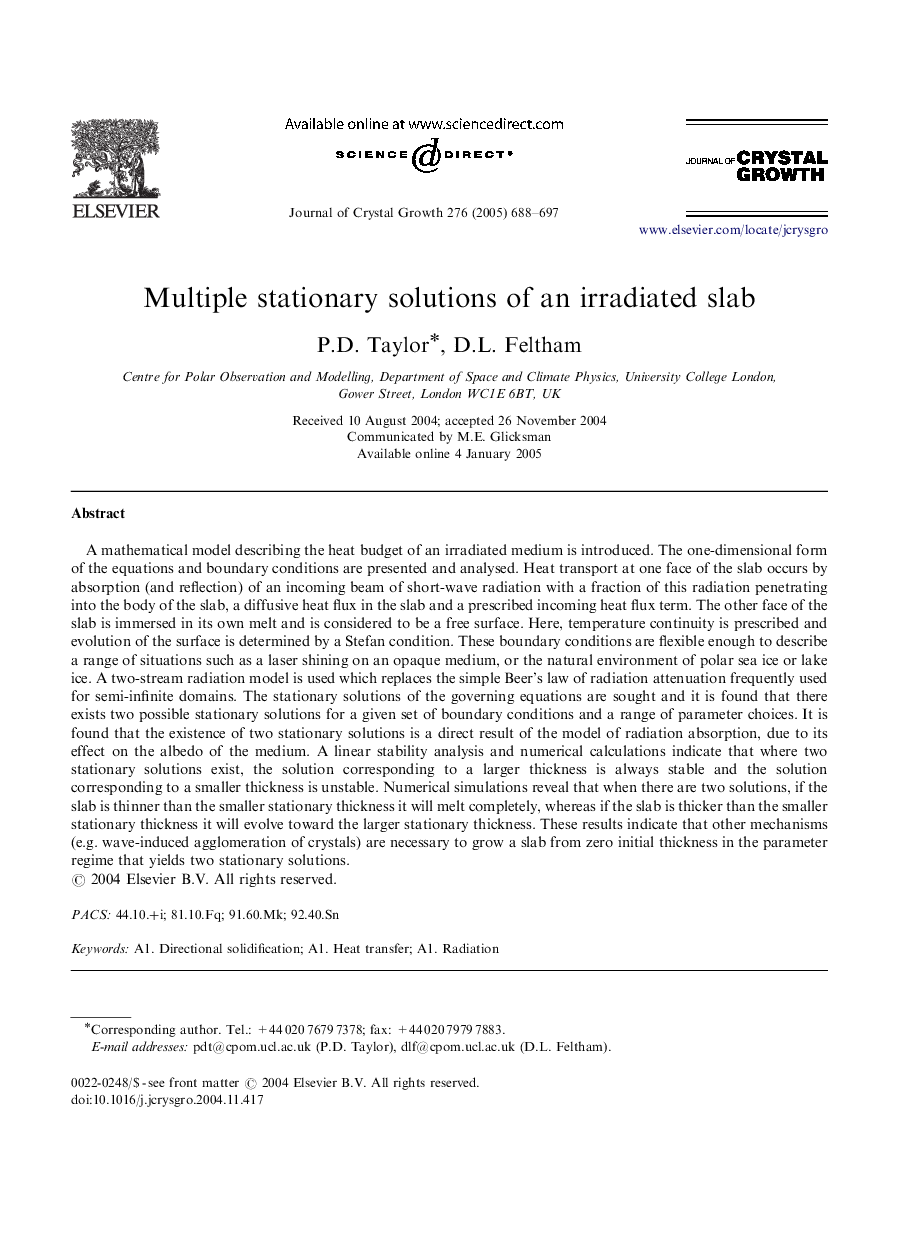| کد مقاله | کد نشریه | سال انتشار | مقاله انگلیسی | نسخه تمام متن |
|---|---|---|---|---|
| 9830024 | 1524501 | 2005 | 10 صفحه PDF | دانلود رایگان |
عنوان انگلیسی مقاله ISI
Multiple stationary solutions of an irradiated slab
دانلود مقاله + سفارش ترجمه
دانلود مقاله ISI انگلیسی
رایگان برای ایرانیان
کلمات کلیدی
موضوعات مرتبط
مهندسی و علوم پایه
فیزیک و نجوم
فیزیک ماده چگال
پیش نمایش صفحه اول مقاله

چکیده انگلیسی
A mathematical model describing the heat budget of an irradiated medium is introduced. The one-dimensional form of the equations and boundary conditions are presented and analysed. Heat transport at one face of the slab occurs by absorption (and reflection) of an incoming beam of short-wave radiation with a fraction of this radiation penetrating into the body of the slab, a diffusive heat flux in the slab and a prescribed incoming heat flux term. The other face of the slab is immersed in its own melt and is considered to be a free surface. Here, temperature continuity is prescribed and evolution of the surface is determined by a Stefan condition. These boundary conditions are flexible enough to describe a range of situations such as a laser shining on an opaque medium, or the natural environment of polar sea ice or lake ice. A two-stream radiation model is used which replaces the simple Beer's law of radiation attenuation frequently used for semi-infinite domains. The stationary solutions of the governing equations are sought and it is found that there exists two possible stationary solutions for a given set of boundary conditions and a range of parameter choices. It is found that the existence of two stationary solutions is a direct result of the model of radiation absorption, due to its effect on the albedo of the medium. A linear stability analysis and numerical calculations indicate that where two stationary solutions exist, the solution corresponding to a larger thickness is always stable and the solution corresponding to a smaller thickness is unstable. Numerical simulations reveal that when there are two solutions, if the slab is thinner than the smaller stationary thickness it will melt completely, whereas if the slab is thicker than the smaller stationary thickness it will evolve toward the larger stationary thickness. These results indicate that other mechanisms (e.g. wave-induced agglomeration of crystals) are necessary to grow a slab from zero initial thickness in the parameter regime that yields two stationary solutions.
ناشر
Database: Elsevier - ScienceDirect (ساینس دایرکت)
Journal: Journal of Crystal Growth - Volume 276, Issues 3â4, 1 April 2005, Pages 688-697
Journal: Journal of Crystal Growth - Volume 276, Issues 3â4, 1 April 2005, Pages 688-697
نویسندگان
P.D. Taylor, D.L. Feltham,